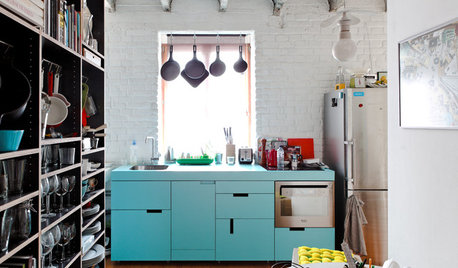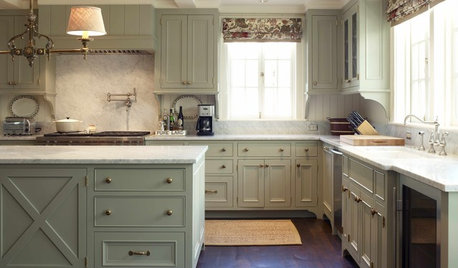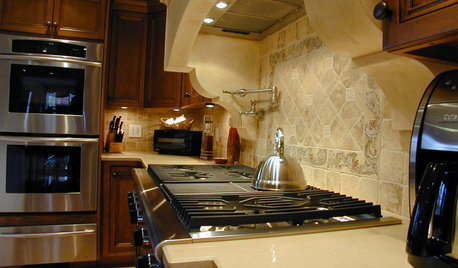hvac guy suggested 300 cfm vent a hood to avoid mua--thoughts?
julieste
11 years ago
Featured Answer
Sort by:Oldest
Comments (31)
cooksnsews
11 years agowill2kz
11 years agoRelated Discussions
HVAC/Forced Gas furnaces for new custom home
Comments (39)If both furnaces are installed in the basement, more rigid duct work would have to be installed, but the lineset and the wiring would shorter. I don't think there would be much difference in materials. There would be more labor. It takes more work to run the duct work up from the basement versus running flexible ducts in the attic. I have no way of estimating this. I would think an extra 2-3 days of labor should do it, but I could be way off. The plans would have to modified. You second quote for the HVAC equipment is $21,850, not $26,000. I like the second quote with the 2-stage furnaces. Remember this quote is for over sized furnaces and condensers. I don't understand why there is a separate quote for gas lines. Is this considered an option? I am not convinced you need a humidifier. You can always get a stand alone dehumidifier later if you need it. The kitchen hood is good if you like to cook....See MoreIs makeup air neccessary for a 600 CFM hood?
Comments (6)I have a Viking range and hood, and we love them. My gas water heater and furnace are in an attached garage, and I live in a mild climate area, so my situation is different from yours, BUT, speaking simply from the hood's operating efficiency, you need to have make up air coming from somewhere for the hood to work. Air is stupid, it will come from wherever available - leaks in the house, down an exhaust vent from a gas appliances, etc. Unless you get the model with the remotely mounted motor, the thing gets so noisy that you will rarely use it at full power. We're normally at half, unless we're cooking many smelly things. In those instances, the fan is on high, a window is cracked, and you can't hear yourself think but the exhaust works great. Stay away from the downdraft models - they don't work. I'm not saying they don't work as well, I'm saying they don't work. We had a friend get one based on a decorator's advice, we tried to talk them out of it, they now regret the decision. Easiest solution - use it on low or medium for most uses, and crack a window for the brief instances when you need really good airflow because you're using many burners or you need to exhaust stinky smells....See More300 CFM vent hood and BACON
Comments (30)You'll be fine. People have fried bacon for years without venting at all. I use an electric skillet for larger amounts of bacon instead of using my range. No problems no horrid smells. No grease on the cabinets or counter. Properly cooked bacon is a slow process over low to medium heat. I only turn on my vent for heavier cooking. All this angst on this forum about venting is downright silly. Unless you are high heat cooking for hours on end on all burners the recommendations are way over rated. And some people just love to spend other people's money. It's refreshing to hear the appliance dealer didn't try to upsell you. Cooking smells in houses is a good thing. It's what makes a house a home. Range hoods are for removing combustion products,smoke, heat, airborn grease, and steam from the area above the cook top. They were never designed to be whole house ventilation systems. Windows let in fresh air. Range hoods remove cooking effluent....See MoreMultiple issues (HVAC, vents, attic and pests) prioritization?
Comments (15)All the venting for bath fans and kitchen can go out through new sidewall or gable vents. There is no need to put holes in the roof. You just need to have someone install the proper vents and (preferably) run hard vent pipe the entire way to where it exits. Any long run of flexible vent really cuts the airflow. Screens on gable vents should be replaced or repaired by stapling up new metal vent material. Then hire a pest control company for a one-time treatment to get rid of any residual problems. Then you need to verify there are also soffit vents, and that they are not blocked by insulation. Gable vents are the exit, but you also need to have soffit vents to let air in. Replacing the recessed lighting cans with insulation-contact rated versions is not that hard if you are willing to crawl around in the attic. However, some of those old electricians really got carried away with nailing the brackets in place. Another temporary option is to get good quality HVAC tape (the shiny tape with a peel-off back), and tape the housing very securely to the ceiling drywall. In your mild climate, just stopping air infiltration will be a good start. If these are metal HVAC ducts with insulation on the outside, they can probably be air sealed without really disturbing them, and then they could apply sealer that encapsulates the old protective coating. In most areas (maybe not CA), encapsulation is an approved way to deal with materials that contain asbestos. Bruce...See Moreattofarad
11 years agogtadross_gw
11 years agojulieste
11 years agoGreenDesigns
11 years agojulieste
11 years agoweissman
11 years agobrickeyee
11 years agojulieste
11 years agoUser
11 years agojulieste
11 years ago3katz4me
11 years agoSparklingWater
11 years agojulieste
11 years agoM4rtin
11 years agojwvideo
11 years agobrickeyee
11 years agogeoffrey_b
11 years agojulieste
11 years agojulieste
11 years agoweissman
11 years agojulieste
11 years agoregbob
11 years agoweissman
11 years agokaseki
11 years agoweissman
11 years agokaseki
11 years agogeoffrey_b
11 years agobrickeyee
11 years ago
Related Stories

KITCHEN DESIGNHow to Choose the Right Hood Fan for Your Kitchen
Keep your kitchen clean and your home's air fresh by understanding all the options for ventilating via a hood fan
Full Story
KITCHEN DESIGNWhat to Know When Choosing a Range Hood
Find out the types of kitchen range hoods available and the options for customized units
Full Story
KITCHEN APPLIANCESThe Many Ways to Get Creative With Kitchen Hoods
Distinctive hood designs — in reclaimed barn wood, zinc, copper and more — are transforming the look of kitchens
Full Story
LIFE12 House-Hunting Tips to Help You Make the Right Choice
Stay organized and focused on your quest for a new home, to make the search easier and avoid surprises later
Full Story
KITCHEN APPLIANCESLove to Cook? You Need a Fan. Find the Right Kind for You
Don't send budget dollars up in smoke when you need new kitchen ventilation. Here are 9 top types to consider
Full Story
HEALTHY HOMEDetox Your Kitchen for the Healthiest Cooking
Maybe you buy organic or even grow your own. But if your kitchen is toxic, you're only halfway to healthy
Full Story
KITCHEN DESIGN9 Ways to Save on Your Kitchen Remodel
A designer shares key areas where you can economize — and still get the kitchen of your dreams
Full Story
TASTEMAKERSPro Chefs Dish on Kitchens: Michael Symon Shares His Tastes
What does an Iron Chef go for in kitchen layout, appliances and lighting? Find out here
Full Story
KITCHEN DESIGN8 Kitchen Design Tips for Foodies
If you own at least one pricey knife and have a slew of kitchen tools, you’ll want to read this
Full Story
MATERIALSInsulation Basics: What to Know About Spray Foam
Learn what exactly spray foam is, the pros and cons of using it and why you shouldn’t mess around with installation
Full Story





will2kz